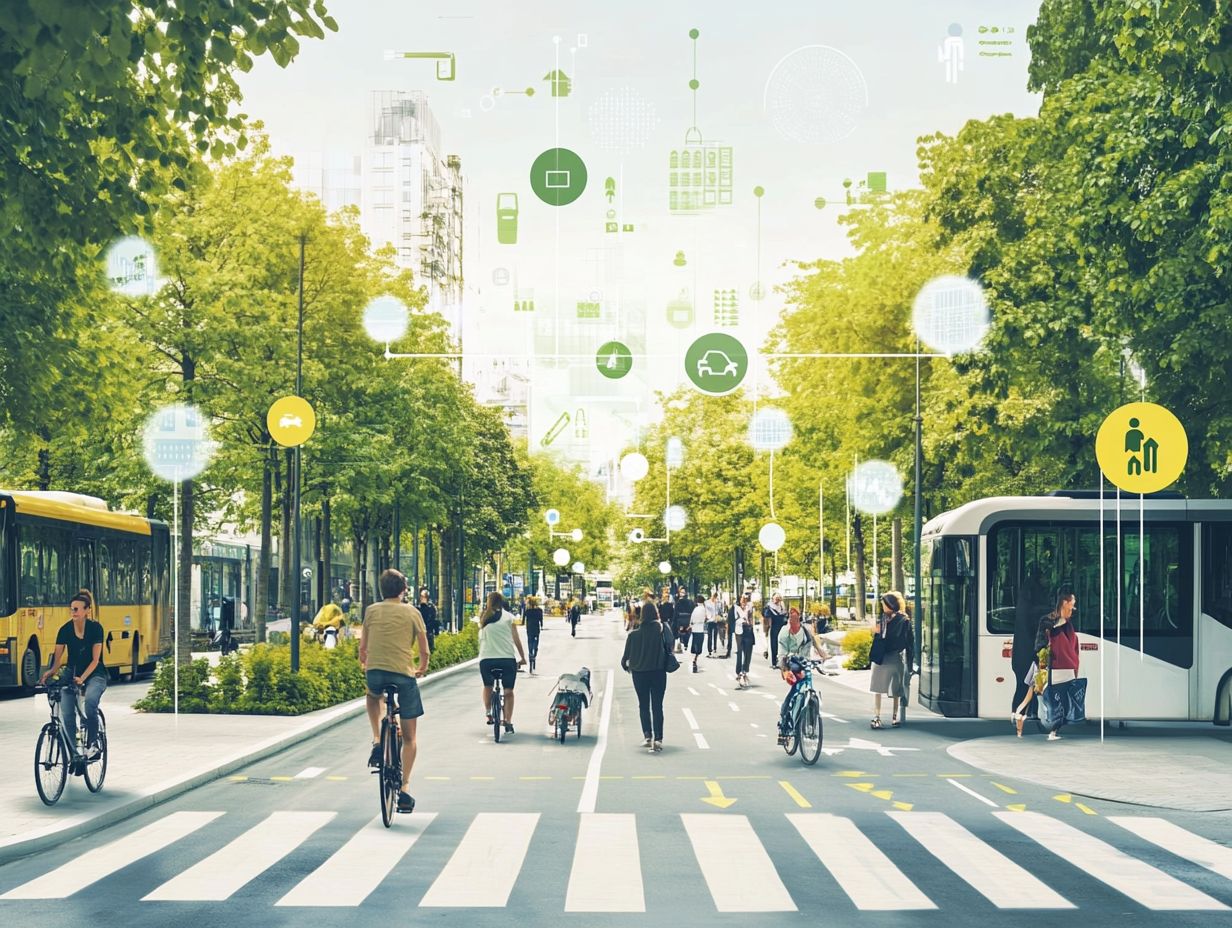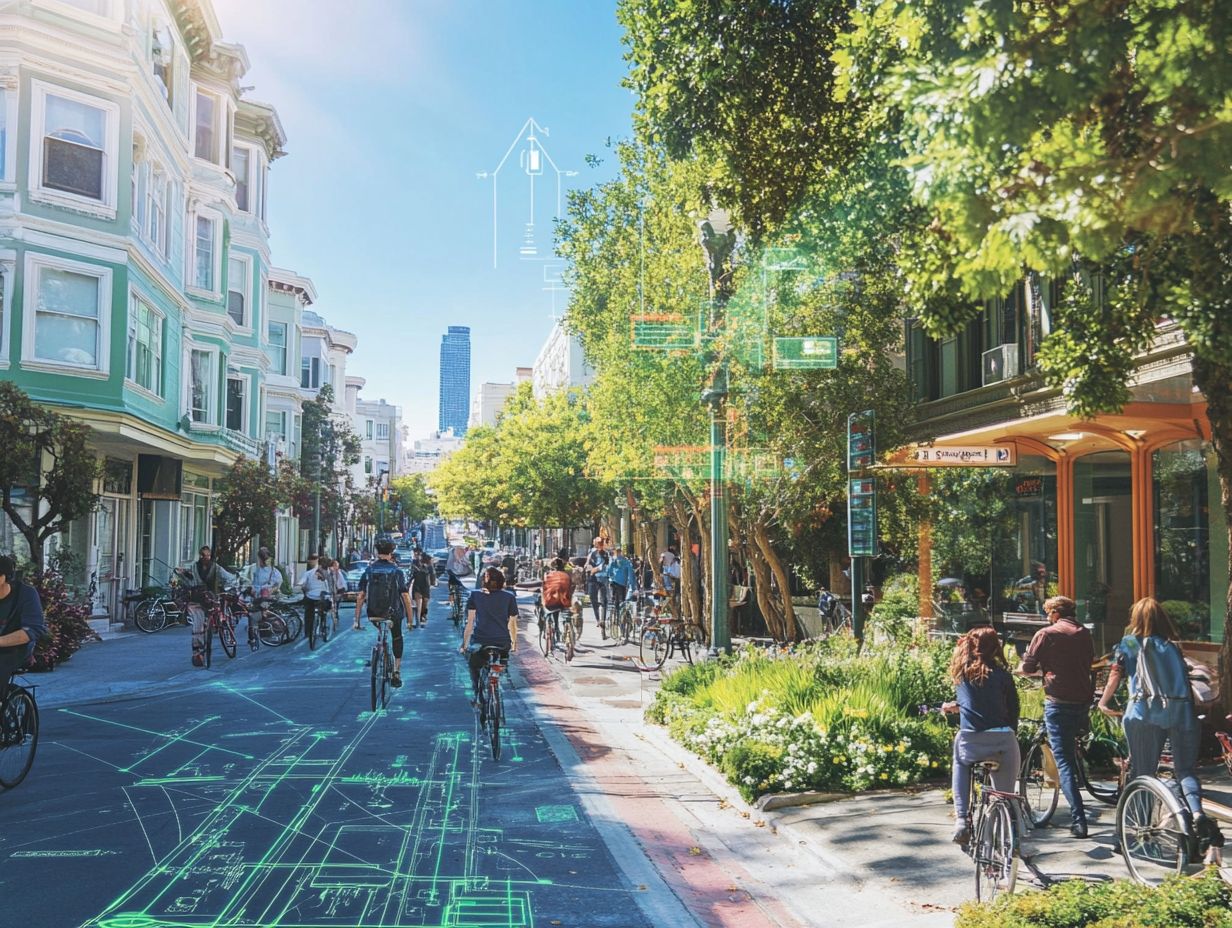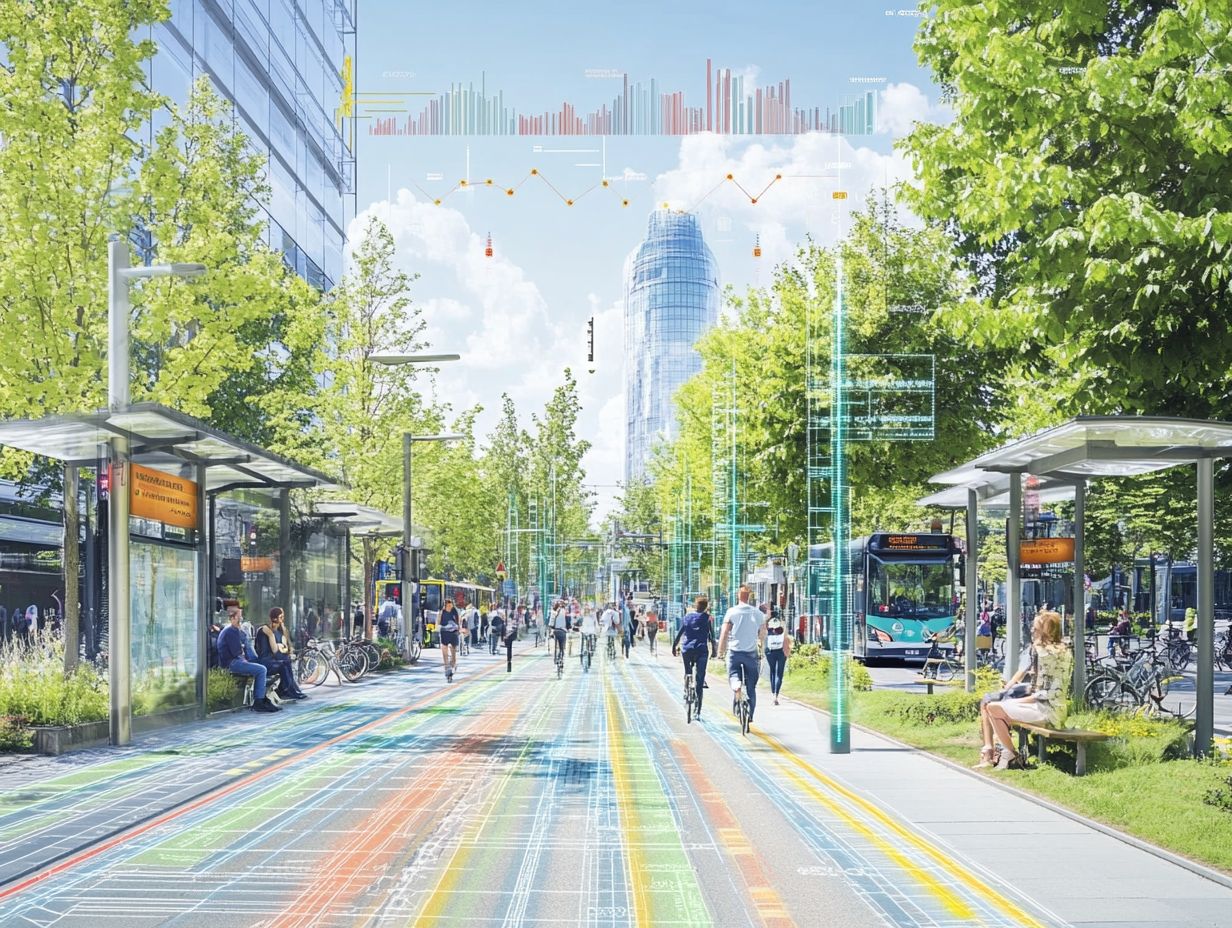Foot traffic data is essential for shaping sustainable transportation planning, as it offers valuable insights into how people move within urban environments and contributes to emissions reduction. By understanding the various types of foot traffic data and their implications for infrastructure and traffic management, urban design can become smarter and more efficient. This article explores different methods for collecting and analyzing foot traffic data, highlights successful case studies, and discusses the challenges and future directions for leveraging this data to create sustainable solutions in smart cities. Discover how insights from foot traffic can transform transportation systems for a greener future and enhance urban resilience.
Understanding Foot Traffic Data

Understanding foot traffic data is crucial for grasping urban dynamics and optimizing city design.
By analyzing pedestrian movement patterns, urban planners can make informed decisions that significantly affect community engagement, the local economy, infrastructure development, and promote transportation equity.
This data helps visualize traffic patterns and provides insights into how factors such as population density and accessibility influence walkability, land use, and public spaces.
Moreover, advancements in GIS technology and real-time data collection enable us to better assess commuting behaviors, travel demand, and mobility trends, ultimately leading to improved urban mobility solutions and more effective transportation systems.
Definition and Types of Foot Traffic Data
Foot traffic data encompasses various definitions and types, serving as a crucial element in understanding pedestrian movement within urban environments.
This data can be categorized into several different types, including location-based analytics, temporal analysis, and demographic profiling.
The Importance of Foot Traffic Data in Sustainable Transportation Planning

Foot traffic data plays a crucial role in sustainable transportation planning by helping urban planners design infrastructure that meets community needs while minimizing environmental impact.
By analyzing pedestrian movement and traffic patterns, planners can create improved transportation systems that enhance accessibility, support a modal shift, and promote the use of public transport.
Impact on Infrastructure and Traffic Management
The impact of foot traffic data on infrastructure and traffic management is significant, as it influences how cities design their transportation networks and adapt to evolving mobility trends.
For example, insights into pedestrian movement patterns enable urban planners to identify which areas require improved access and safety measures, leading to more informed infrastructure decisions.
This data-driven approach is also essential for managing congestion, as it allows cities to pinpoint peak foot traffic times and adjust timing or physical infrastructure, such as introducing bicycle lanes, to enhance urban mobility.
By prioritizing pedestrian safety and assessing accessibility, city planners can create environments that encourage foot traffic, promote community vibrancy, and support active transportation.
Ultimately, incorporating foot traffic data into urban design fosters a more connected city where people can navigate safely and efficiently, improving user experience and facilitating community safety.
Methods of Collecting and Analyzing Foot Traffic Data

Collecting and analyzing foot traffic data involves utilizing sensor technology and big data analytics to gain insight into pedestrian behavior, travel behavior, and movement patterns in urban areas.
Techniques and Tools Used in Data Collection
Various techniques and tools are employed to collect foot traffic data, with sensor technology being the most common method for recording real-time data to study pedestrian behavior and traffic patterns.
These tools provide insights into the number of people traveling through a given area, as well as identifying peak timeframes and the most common routes.
Geographic Information System (GIS) technology enables urban planners to visualize this data on maps, which assists in making informed decisions regarding infrastructure, zoning regulations, and urban design.
The application of advanced analytics further enhances the accuracy of data interpretation, offering a deeper understanding of urban mobility, travel patterns, and behavioral insights.
Collectively, these methods help optimize public spaces and transport systems, leading to a more efficient urban environment.
Case Studies: Successful Implementation of Foot Traffic Data in Transportation Planning

Case studies demonstrating the successful implementation of foot traffic data in transportation planning illustrate how cities have effectively used this information to enhance urban mobility and foster community engagement.
Real-life Examples and Results
Real-world applications of foot traffic data have yielded significant benefits in urban mobility and infrastructure enhancement, showcasing the potential for improved accessibility and economic growth.
For instance, the people counting company V-Count has helped cities like New York and San Francisco utilize foot traffic analytics for route optimization of public transport routes and pedestrian pathways. By analyzing movement patterns, local governments were able to identify areas where people congregated, leading to the redesign of sidewalks, the introduction of new bus lanes, and more efficient public space design.
This initiative not only improved pedestrian traffic flow but also enhanced access to key commercial areas, resulting in a substantial increase in foot traffic for nearby businesses.
Challenges and Future Directions for Foot Traffic Data in Sustainable Transportation Planning
The challenges associated with using foot traffic data in sustainable transportation planning are considerable. If these challenges are not addressed, they will hinder the data’s potential to contribute to the development of effective and equitable transportation systems.
Obstacles and Potential Solutions
Several challenges exist regarding the use of foot traffic data, including the methods of data collection and a lack of community involvement. However, there are effective solutions to improve data collection practices and enhance urban mobility outcomes.
Traditional data collection methods often face limitations, such as a lack of real-time information and insufficient community participation in the data gathering process. These challenges can be mitigated by employing mobile applications and IoT sensors, which can provide more accurate insights into pedestrian behavior, travel demand, and movement patterns.
Additionally, utilizing cloud-based analytics solutions enables cities to process larger volumes of data more efficiently, facilitating quicker adjustments to infrastructure or services.
Encouraging community engagement in the data collection process is crucial, as it ensures that the solutions developed address the genuine needs of residents, ultimately promoting smarter urban mobility, integrated transport planning, and more responsive urban spaces.






